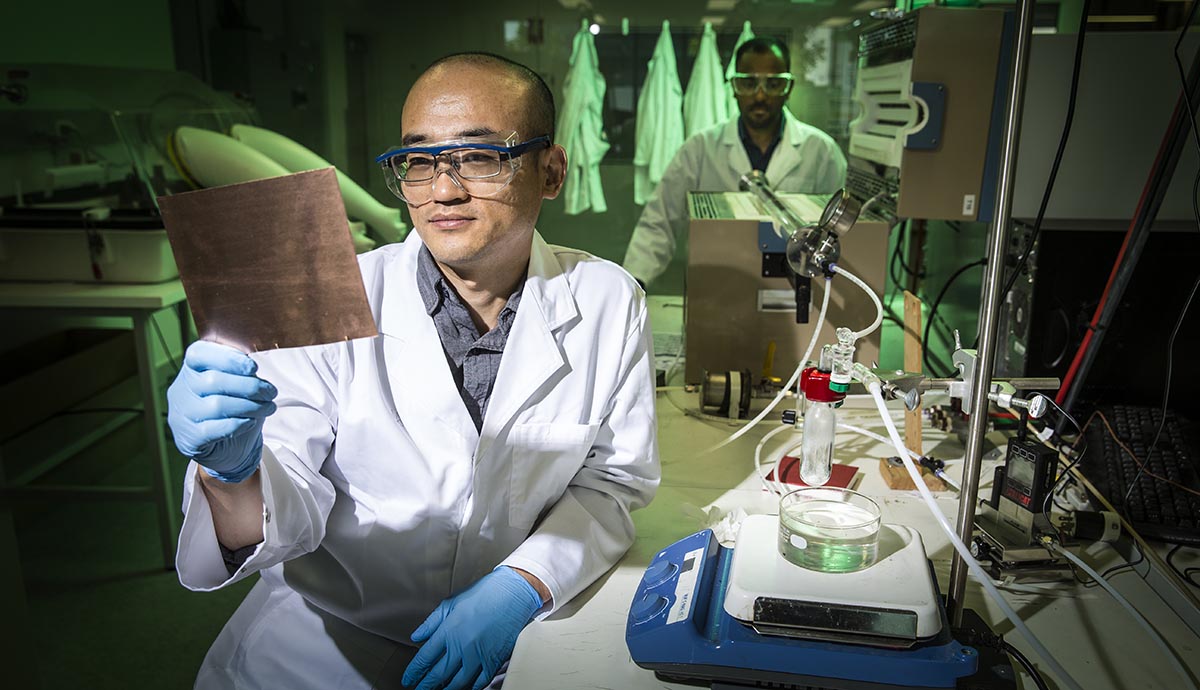December 13, 2016
Coating as thin as one atom shown to protect metal from corrosion
Research could revolutionise development of next-generation nanoelectronics.
In conventional electronics, polymer coatings are routinely applied to metallic surfaces to protect them from corrosion. For devices built on a nanoscale, where space is extremely limited, the search is on for a coating that is ultra thin yet still provides protection.
Researchers from the Institute for Superconducting and Electronic Materials at the University of Wollongong (UOW) have made a significant breakthrough, demonstrating that coatings of a single-atom thickness can protect metals from corrosion. The results were published in the journal Advanced Materials and also reported in the leading science journal Nature.
The research team, led by Dr Zhenguo Huang, coated copper with a 2-dimensional hexagonal boron nitride film (BNNF) and then used microscopes and spectroscopy to study how well the film protected the copper from corrosion.
BNNF was chosen for its insulating nature, impermeability to small molecules, robustness, transparency and chemical stability.
Dr Huang said the findings had significance for the development of the next generation of nanoelectronics, which will require atomically thin coatings.
“It is targeting ultra-thin coating for nanotech devices where you have limited space but you need some protection - that is why we are creating a material that is one or two atoms thick,” Dr Huang said.
In their experiments, the researchers found that the quality of the BNNF rather than its thickness proved to be the critical factor for protection. Copper coated with a high-quality atom-thick layer of BNNF showed “outstanding anti-corrosion resistance”, but corrosion was actually increased when the copper had a thicker but poorer quality coating that was discontinuous and had cracks in it.
“We demonstrated that a one-atom thick layer can provide protection from corrosion,” Dr Huang said.
“We also observed some key issues in using this material. To make the protection effective, the layer has to be very high quality. You have to make it defect free and continuous over a large surface.
“The next step is to look at how it works with other materials. We have shown that it works with copper, now we want to try it with different metals.”
